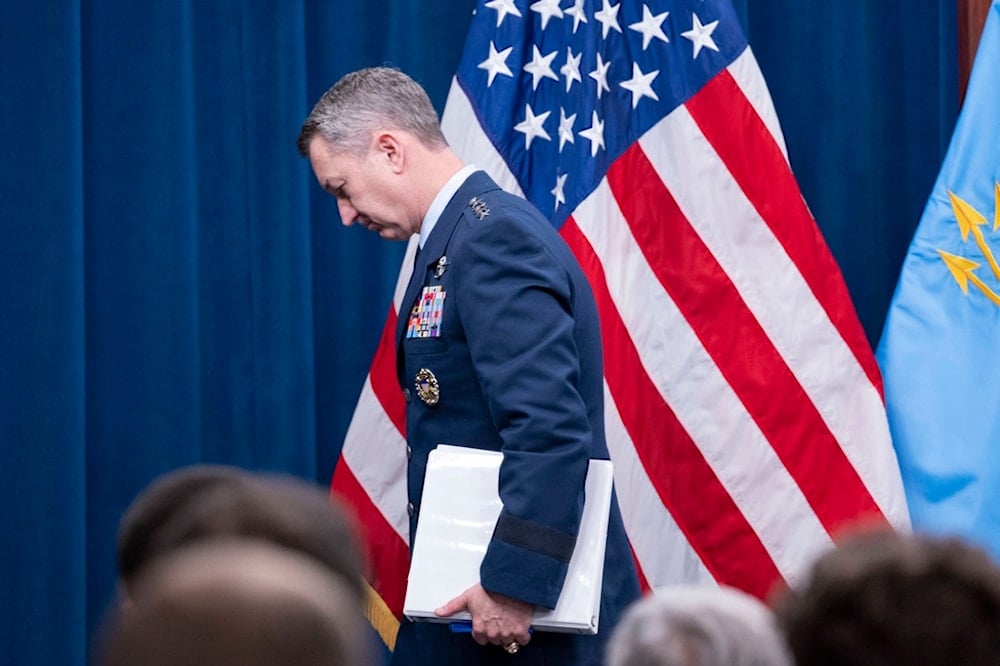US admits bunker-buster bombs likely ineffective on Iran Isfahan site
Instead of deploying its $27 million-per-round MOP arsenal, the US relied on Tomahawk cruise missiles launched from a submarine.
-

Joint Chiefs Chairman Gen. Dan Caine steps away from the podium following a news conference at the Pentagon, Thursday, June 26, 2025, in Washington. (AP)
In a significant admission of strategic weakness, the United States military has acknowledged that its most powerful conventional bombs are incapable of reaching Iran's deeply fortified nuclear facilities, particularly the underground complex in Isfahan.
The revelation was made during a classified congressional briefing on Thursday, where Chairman of the Joint Chiefs of Staff General Dan Caine told lawmakers that the Massive Ordnance Penetrator (MOP), a 30,000-pound bomb engineered to penetrate hardened bunkers, would likely have been ineffective against the Isfahan site due to its extraordinary depth and reinforced structure.
According to sources familiar with the briefing, US officials assessed that the site, allegedly housing up to 60% of Iran's enriched uranium stockpile, was buried too deep for any known American munitions to reach.
Instead of deploying its $27 million-per-round MOP arsenal, the US relied on Tomahawk cruise missiles launched from a submarine, an implicit acknowledgment that even some of the most advanced air-delivered munitions were not up to the task.
Observers argue that the choice exposes a fundamental limitation in US conventional strike capabilities when confronting Iran's deeply entrenched and strategically dispersed nuclear infrastructure.
False 'obliteration'
Contrary to public claims by President Trump that the strikes "completely obliterated" Iran's nuclear sites, satellite images released by Planet Labs and Maxar Technologies reveal that Iran swiftly began clearing damage and restoring access at the Fordow and Isfahan facilities.
Recent photos show excavators and vehicles operating near tunnel entrances at Fordow, indicating continued Iranian access and operational control just days after the attacks.
Speaking to CNN, weapons expert Jeffrey Lewis noted a "moderate number of vehicles" present at Fordow, while Maxar images documented clear construction activity, casting further doubt on the notion of lasting degradation.
Planet Labs pass from 27 June shows the western tunnel at the Esfahan UCF complex cleared and open. The day-earlier Airbus shot had it back-filled and camouflaged.
— Thomas Keith (@iwasnevrhere_) June 27, 2025
The tunnel complex beneath Isfahan is reportedly 100 meters deep, far deeper than Fordow and beyond the effective… pic.twitter.com/xK1Iq2vzGN
At the same time, intelligence assessments have steadily undercut the White House's narrative. A Defense Intelligence Agency (DIA) report leaked to CNN found that the strikes failed to destroy the core infrastructure of Iran's nuclear program or eliminate its stockpile of highly enriched uranium.
While some surface-level damage was inflicted, Iran's centrifuges remained largely intact. The report concluded that the attacks set back the nuclear program by "months rather than years."
Read more: Trump demands CNN reporter be fired for revealing Iran strike failure
The contradiction continues
The picture emerging from leaked intelligence and visual confirmation is at odds with continued political bravado. Defense Secretary Pete Hegseth, who previously claimed Iran's nuclear program had been "obliterated", later downgraded the assessment to "moderate to severe" damage.
Trump, speaking at a NATO summit in The Hague, admitted US intelligence remains "very inconclusive" about the actual results, though he still compared the strikes to the bombings of Hiroshima and Nagasaki.
Senators have also begun to acknowledge the mismatch between military claims and reality. Democratic Senator Chris Murphy stated candidly after the briefing, "Some of Iran's capabilities are so far underground that we can never reach them."
Meanwhile, Republican Senator Lindsey Graham, who initially echoed Trump's triumphalism, admitted, "I don't know where the 900 pounds of highly enriched uranium exists."
As Iran resumes operations at Fordow and retains unscathed access to its Isfahan complex, the US finds itself confronting not only the limits of its military tools but also a deepening credibility gap between its battlefield rhetoric and strategic outcomes.

 4 Min Read
4 Min Read








